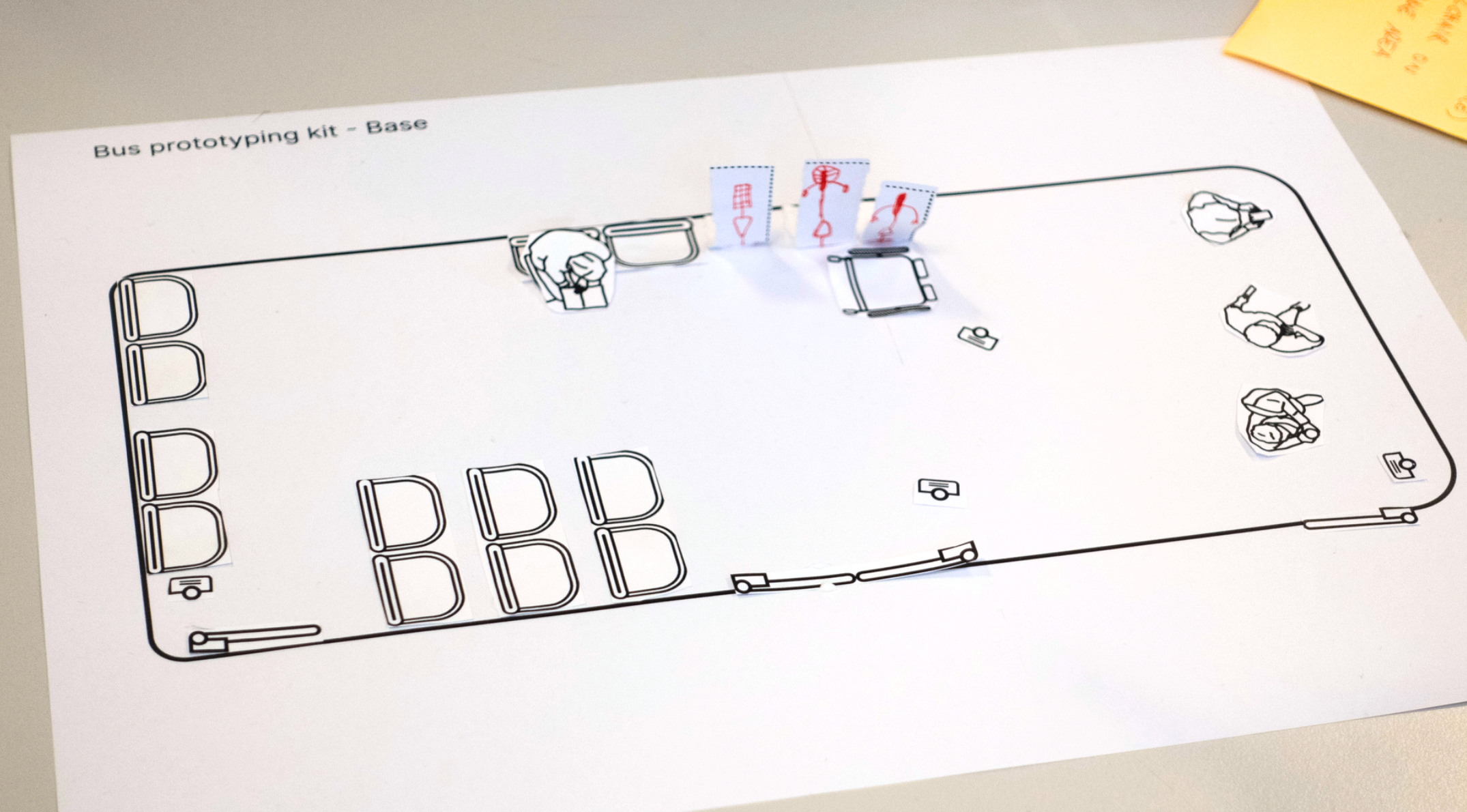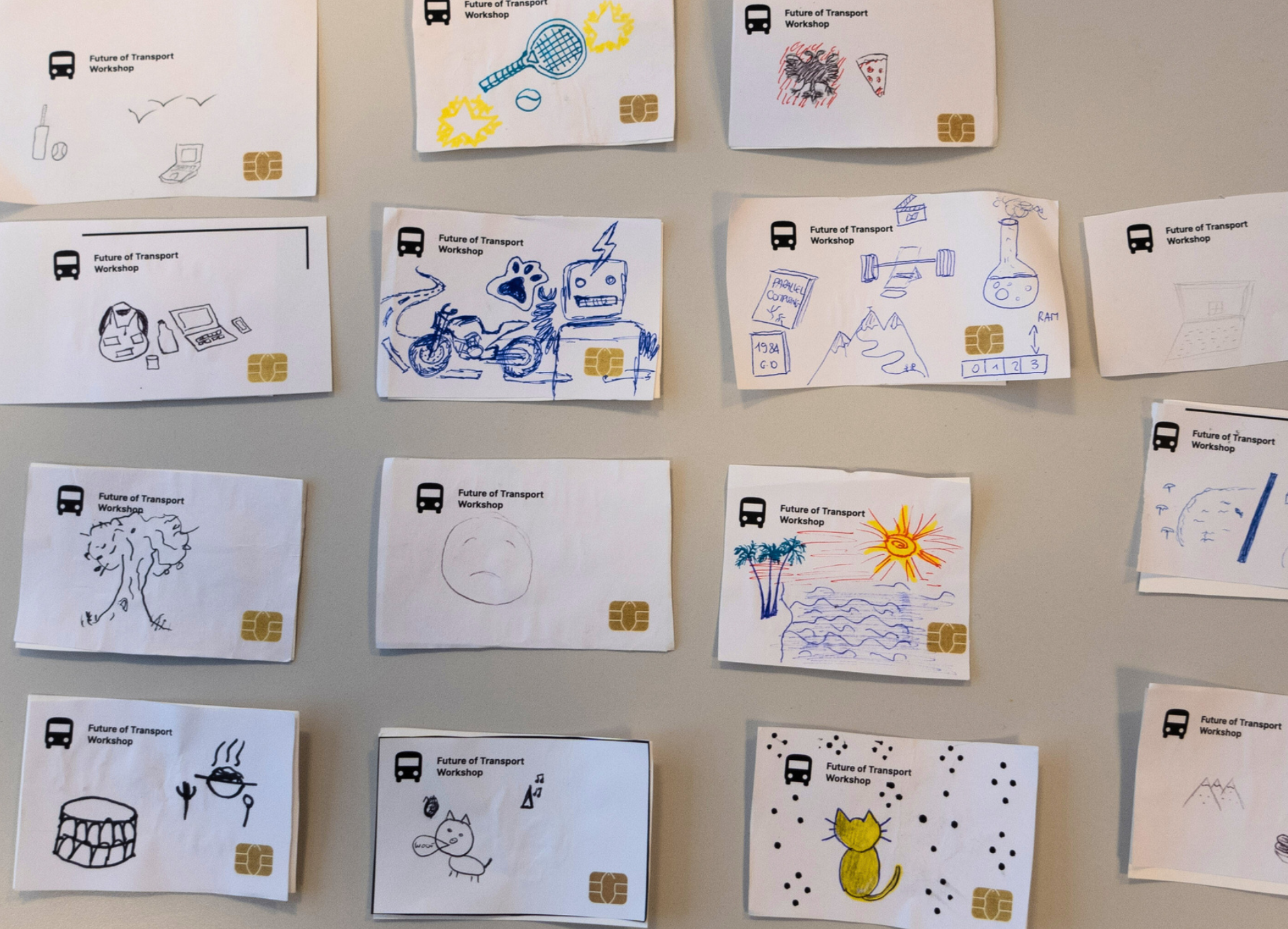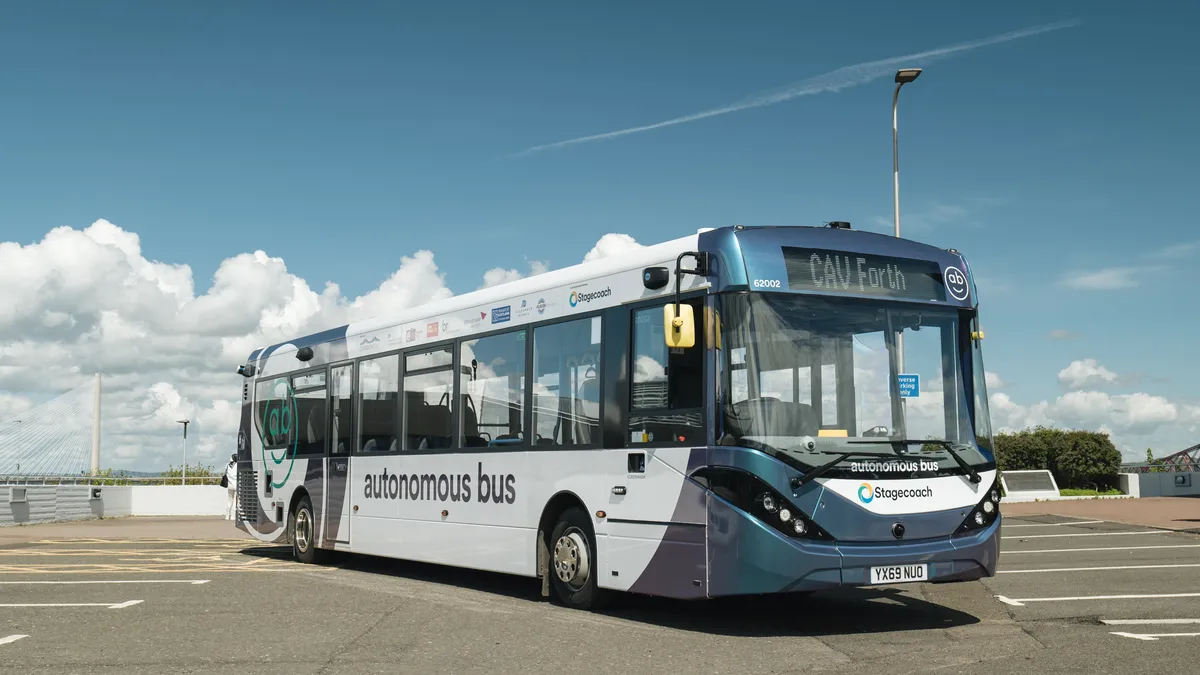Context
TechFit Challenge
Duration
One month
My Role
User Interface Design, Preliminary Research & Strategy
Team
Nine students
TechFit Challenge & Problem Statement
For the 2024 TechFit Challenge, offered by ECIU University and hosted by the Universitat Autonoma de Barcelona (UAB), teams of international students were asked to develop innovative solutions at the intersection of technology and fitness.
UAB challenged us to use technology to make student's lives less sedentary.
We were tasked with finding ways to make the increasingly sedentary lifestyle of students at UAB more active. We had to propose a solution that would help to promote healthy behaviors, fitness and an active lifestyle.
Strategy
When it comes to behavioral change or increasing engagement with a desired behavior (in this case: working out), there are a number of strategies that can be employed (nudging, gamification, etc.).
Before selecting a strategy, we began by thinking about our target users and how we could create a solution that speaks to them.
The target audience we chose to focus on are "aware beginners": all those students that are already somewhat interested in living a more active lifestyle, but they either lack the knowledge or motivation to start working out.
Our target were "aware beginners": people that already want a more active lifestyle, but either lack the knowledge or motivation to start.
Starting from this, the strategy we adopted aimed at reducing friction (lowering cognitive and environmental barriers to the behavior) and adding an element of novelty (and this is where the "Smart Workout Stations" come in), while also attempting to create a community around the desired behavior and adding elements of socialization and peer influence (through the companion app), which has been shown to be very effective at shaping behaviors (Schmitt‐Beck, 2015).
We chose to employ behavioral change strategies such as reducing friction towards the desired behavior and adding a social aspect and elements of novelty to it.
Smart Workout Stations
Workout stations are structures designated for exercise, typically found outdoors.
They can be general purpose or exercise specific, freestanding or integrated in a "bundle" of structures, spread out around a space, like a park, or co-located in a small area.
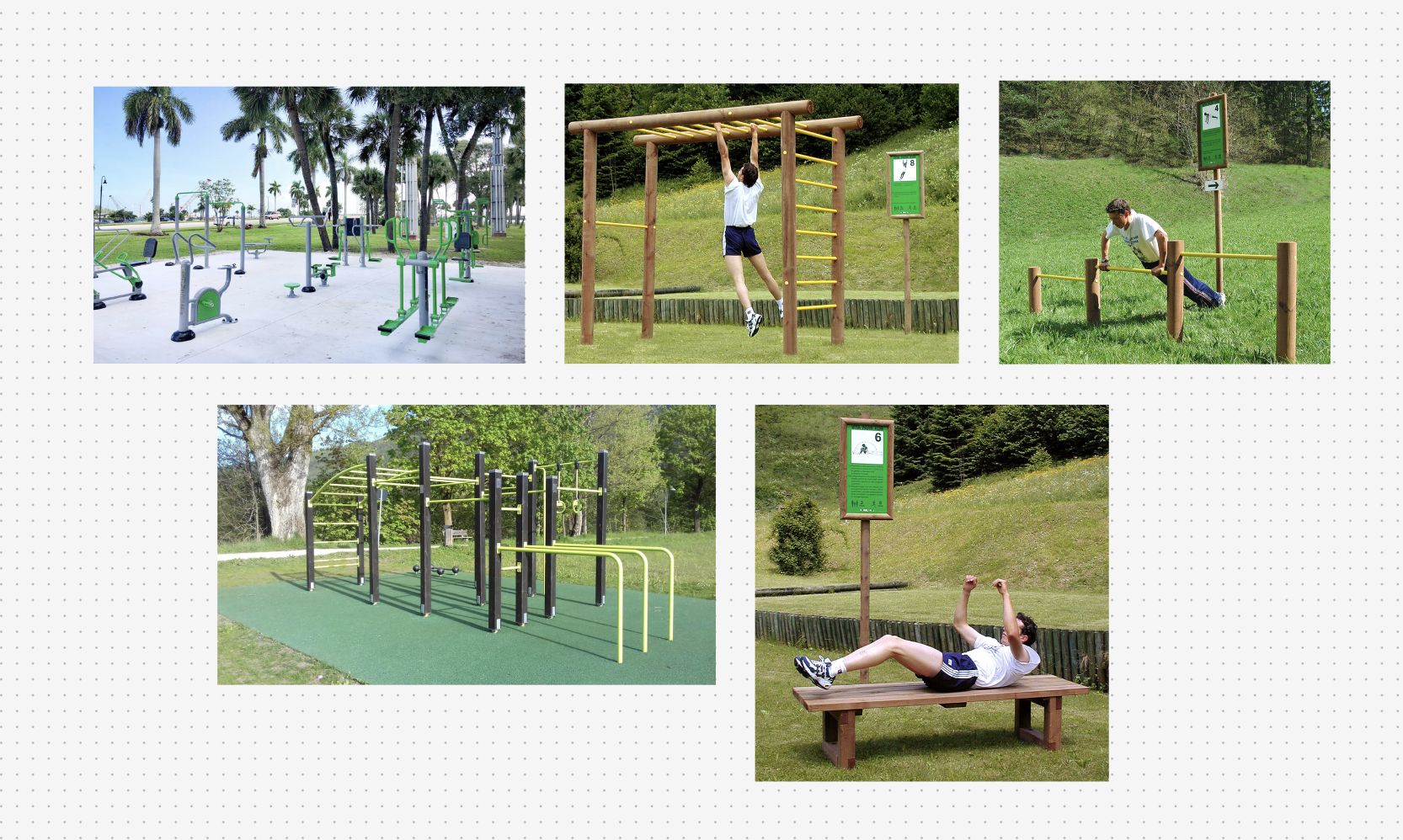
Examples of different types of workout stations
Workout stations are often associated to some information, usually displayed on signs next to them. These include pictograms and text descriptions meant to explain how to execute the exercise, suggested number of repetitions, sometimes divided by age or fitness level, and more.
We believed that some of this information could be conveyed more effectively in digital form, which was a starting point for the idea of "smart stations".
From our research we understood that the information displayed alongside workout stations could be more effectively conveyed and personalized for the user in a digital medium.
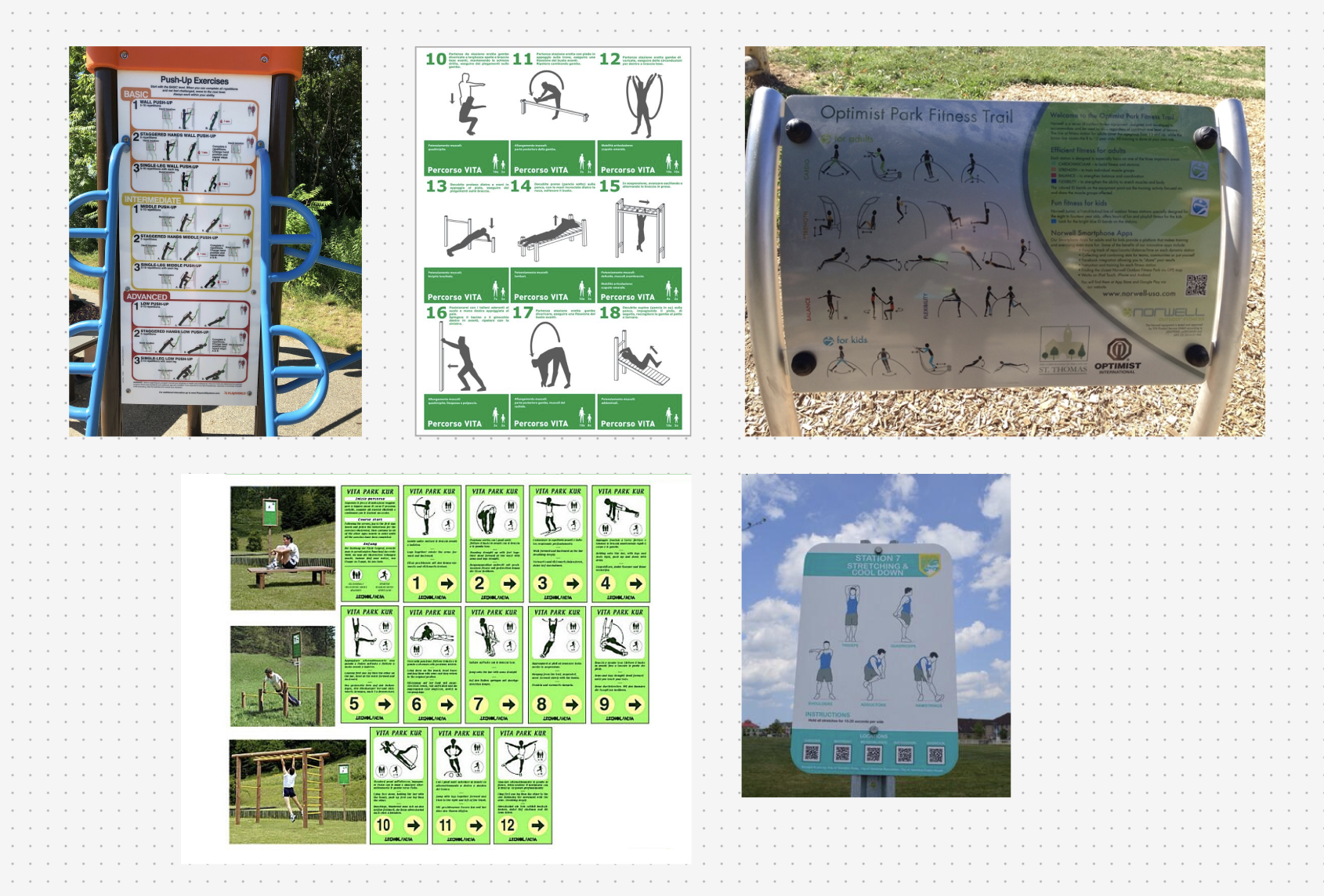
Information associated with workout stations.
On a basic level, the smart station allows the user to "connect" to the station, by scanning a QR code, or a NFC tag embedded in the station, and get access to some digital information related to that specific station. This opens up to a wide range of possibilities for interaction.

Brainstorming ideas for the smart stations
After considering various ideas, we opted for simpler solutions that would allow our system to be back-compatible with existing workout stations, making it cheaper and easier to implement.
For reasons of costs and practicality, we wanted to create a smart station system that would be possible to retrofit on existing workout stations, since building new stations would come with a considerable cost. We also wanted a system that didn't require the station to be connected to the electrical grid since many stations are found in parks, and bringing electricity to them may prove complex and expensive.
For this reason, more ambitious and innovative ideas were discarded in favour of a simpler solution: a QR Code and NFC tag placed on the station, that allows users to "connect" to it, and a companion app, that is not necessary to use the system, but provides a much broader experience and an aspect of socialization.
The QR code in the main way to connect to the station, and the NFC tag (which does not require electricity) offers a backup way of connecting to the station, making the system more resilient against acts of vandalism or other events that could make the QR code unreadable.
Both the code and the tag are placed on a plaque or a "sticker", that is attached to the station.
QR Codes allow users to "connect" to the station and obtain digital information related to that specific station. This opens up to a wide range of possibilities for interaction.

Example of plaque on a station
The Companion App
The "smart" functionalities are accessed through an app or the web.
Initially, when a first-time user scans a station's QR code, a simple web page with a video tutorial of the exercise opens. From there, the user is prompted to download the app, where all additional features are found.
A companion app allows users to gain full advantage of the system.
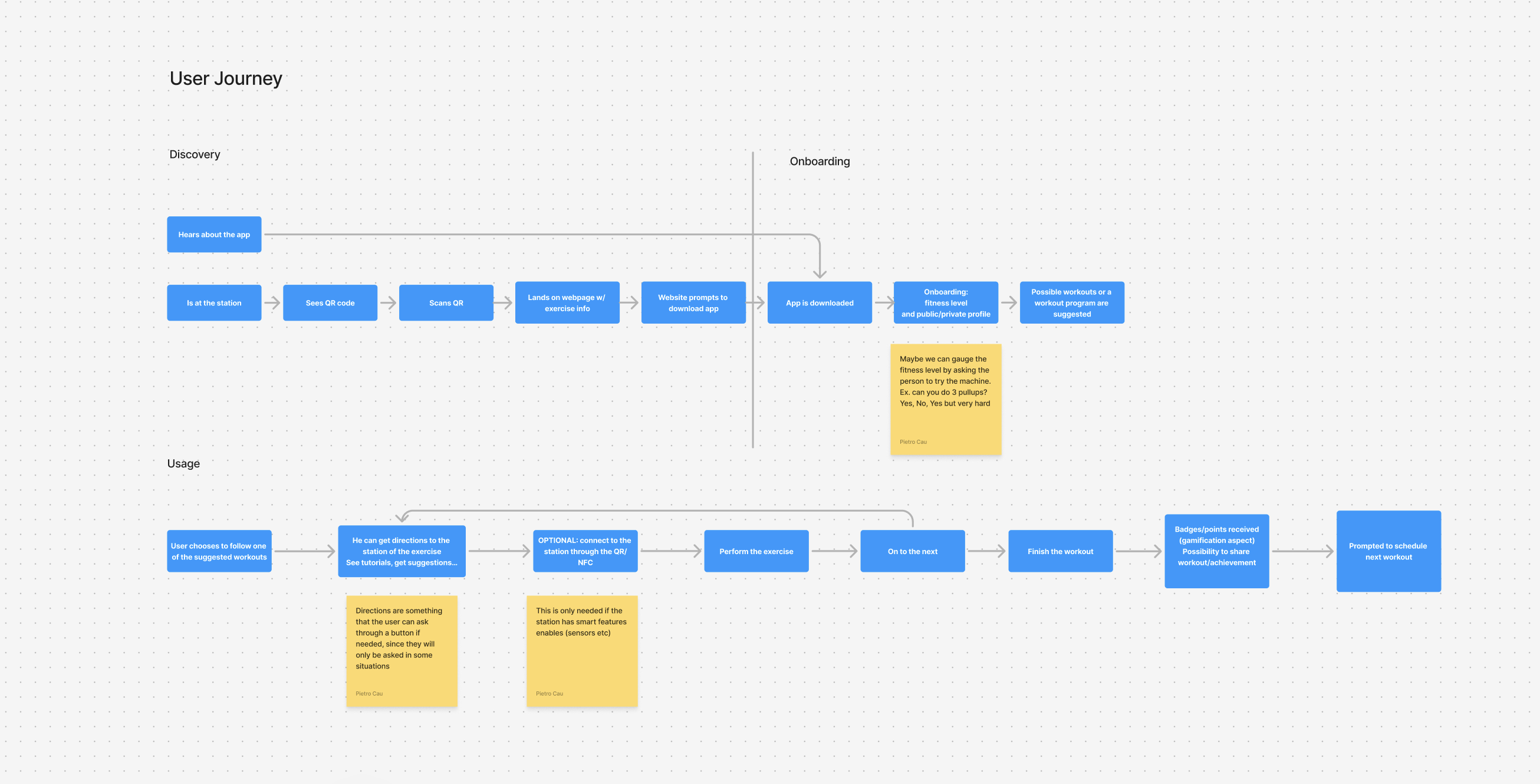
Mapping the user journey
Other than exercise tutorials, users get recommended numbers of sets and reps, personalized on their fitness level.
They can also follow suggested workouts based on the stations around them, log their workouts in the app,
and see different stats for the various stations (number of workouts and the like).
Through the app users can access exercise tutorials and stats for specific stations, get a map of the available stations is the area, receive personalized workout suggestions based on their fitness level and nearby stations, and are also able to connect with other users.
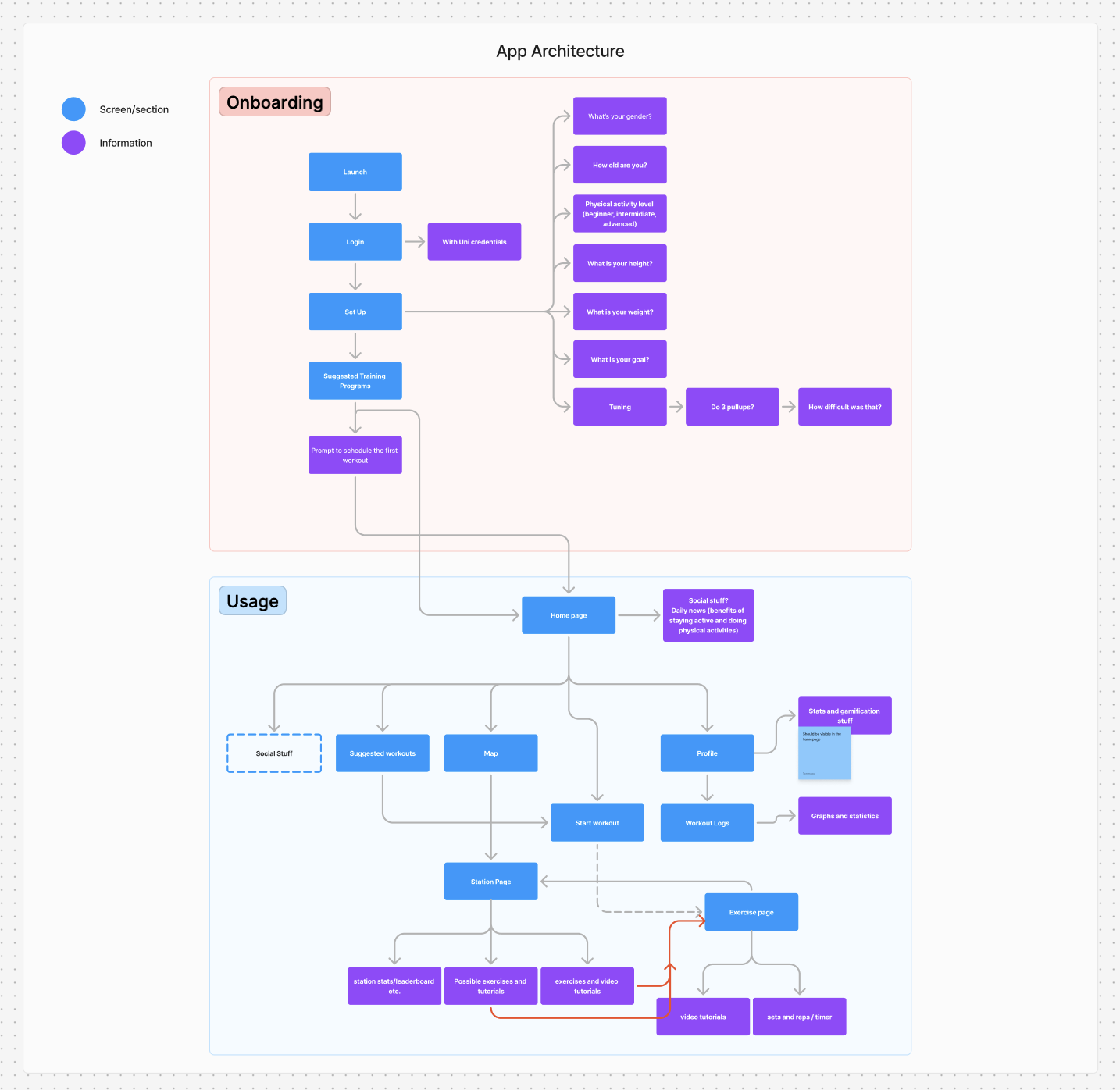
User Flow Diagram
A map view displays the position of nearby stations.
Users can also choose to enable location sharing. A function through which users who are friends within the app can see each other on the map when they are connected to a station.
Thanks to this functionality users will be able to meet with friends at the stations and build social relationships centered around working out.
These features aim to create a community around the workout stations, something that often happens organically around fitness parks.
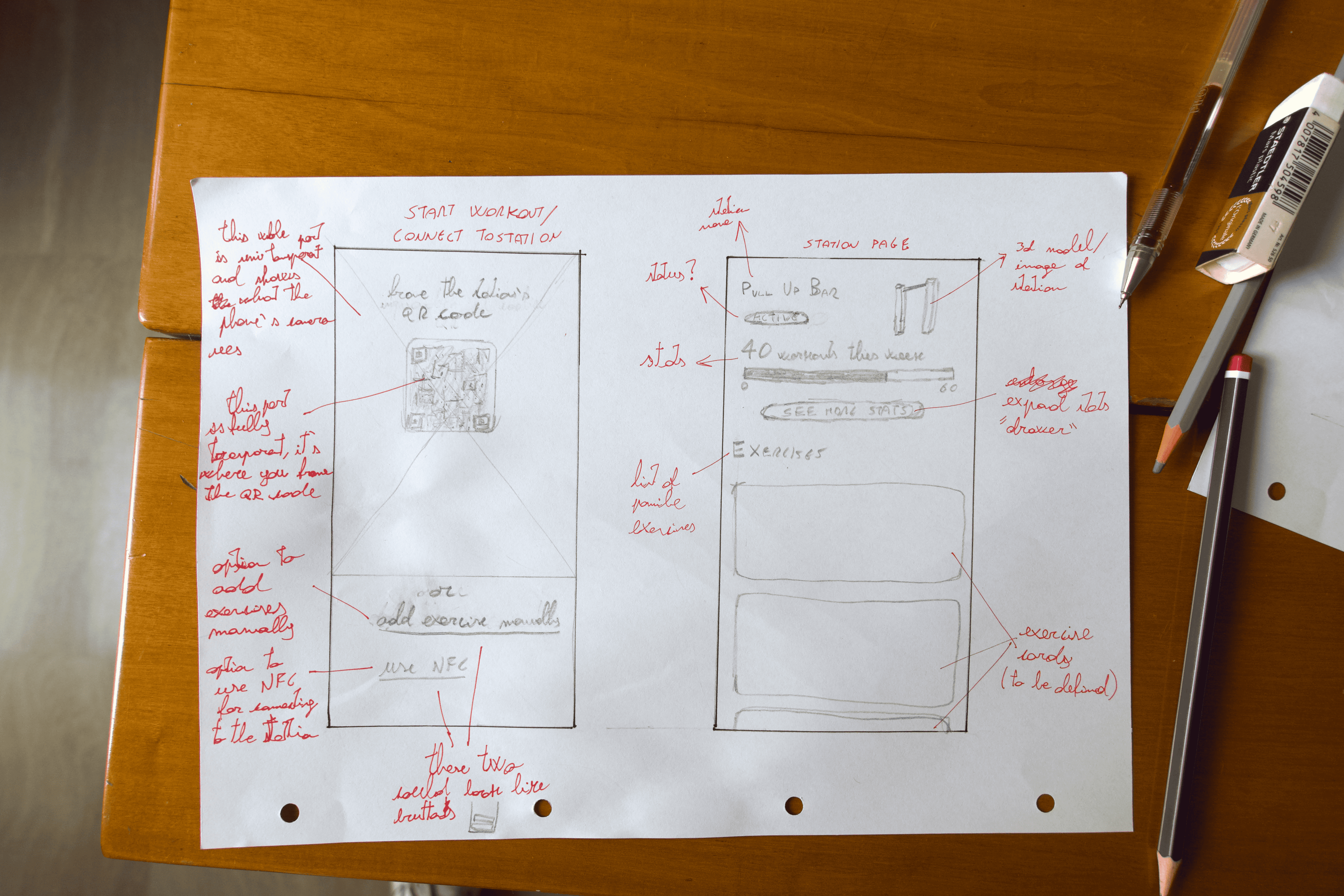
Sketches
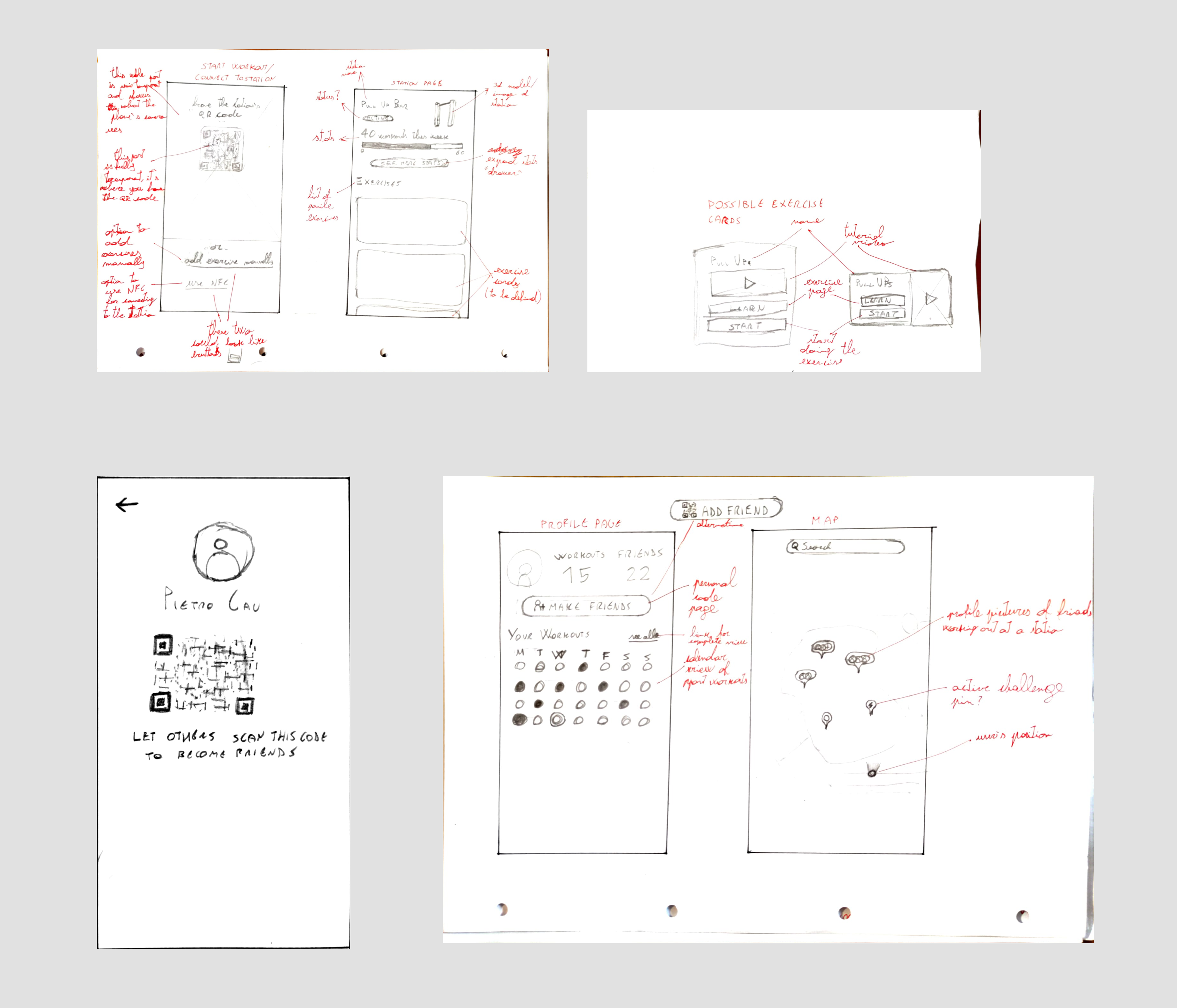
Sketches
To design the app we iterated over multiple designs, moving from low to high fidelity. Starting with sketches and wireframes to establish the "skeleton" of the UI, and them moving to higher fidelity prototypes, where we iterated through more granular choices.
The design process was iterative.
It started from pen and paper sketches and it gradually became more and more refined.
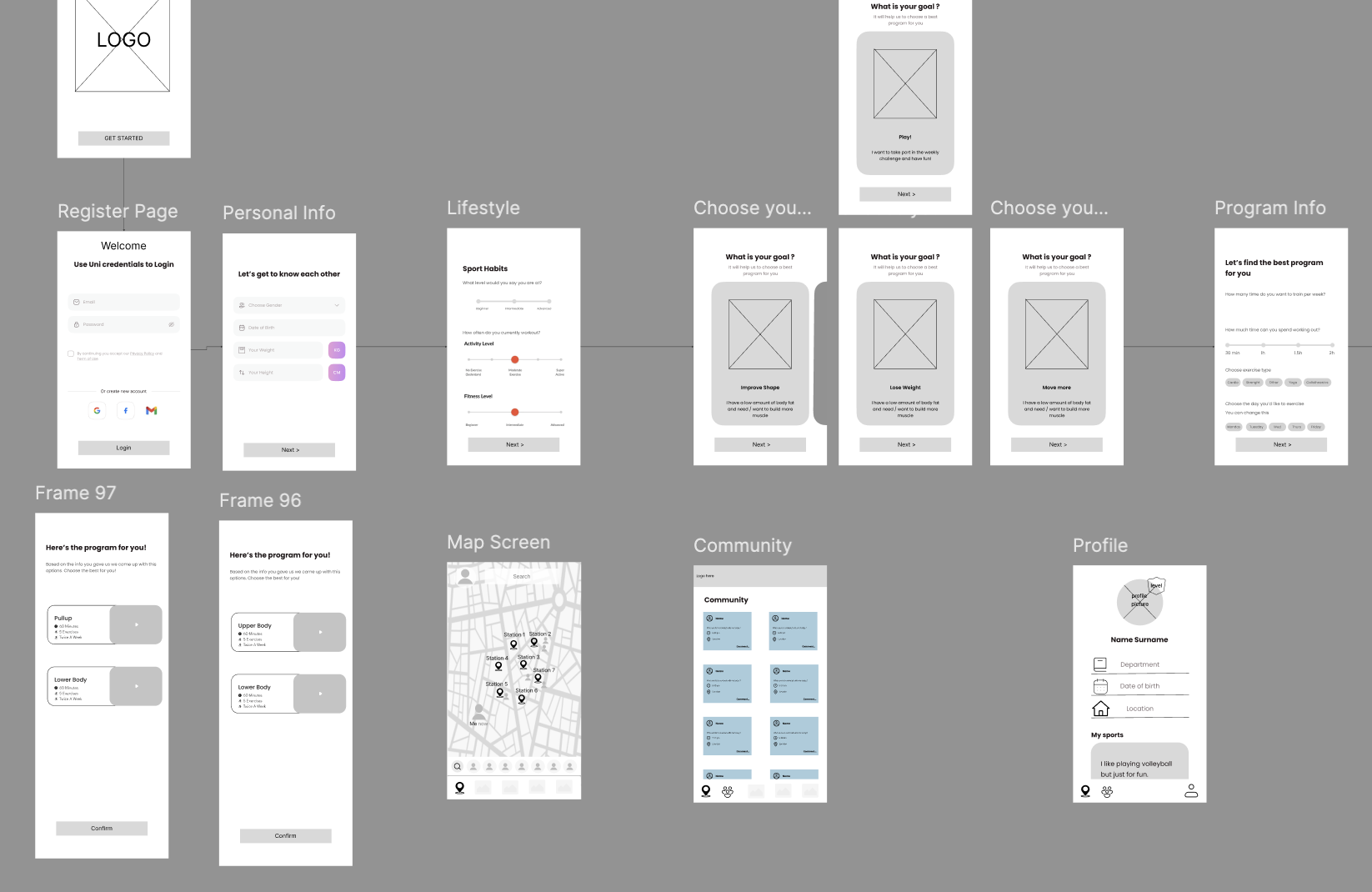
Wireframes

Design Iterations

Design Iterations
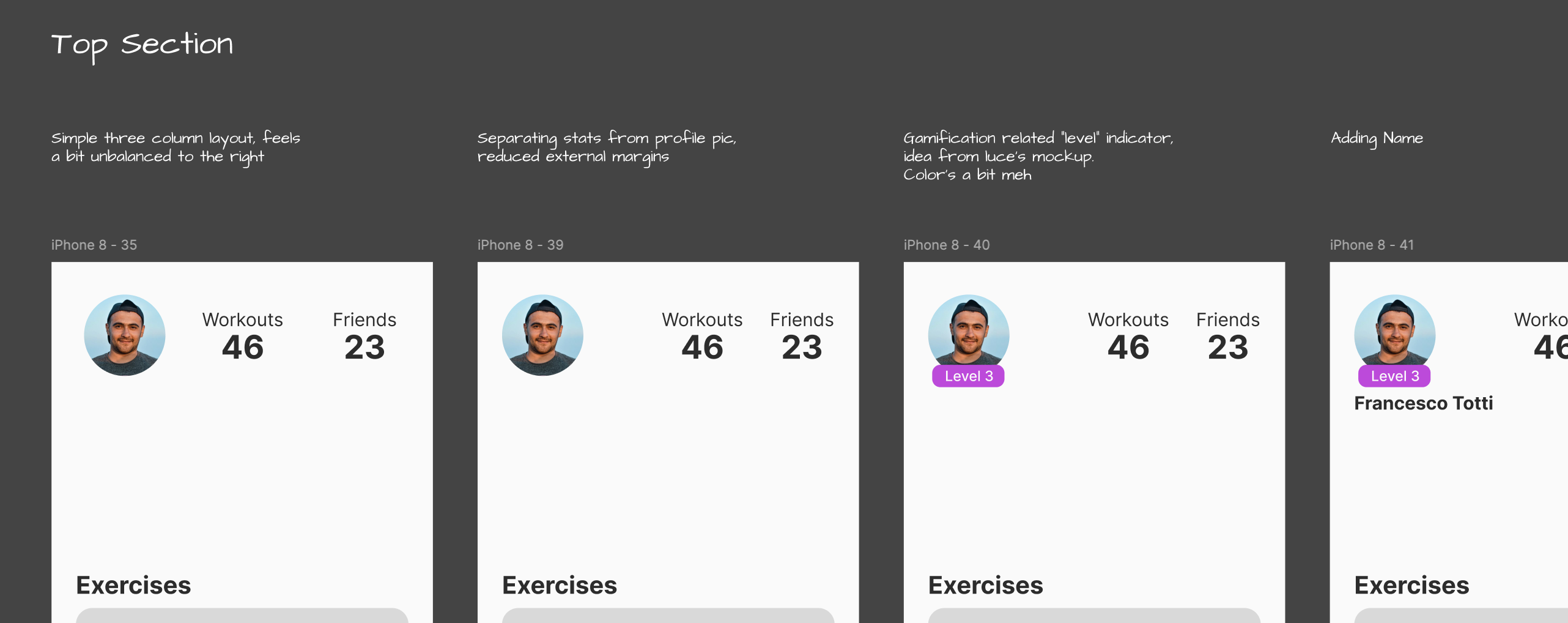
Design Iterations
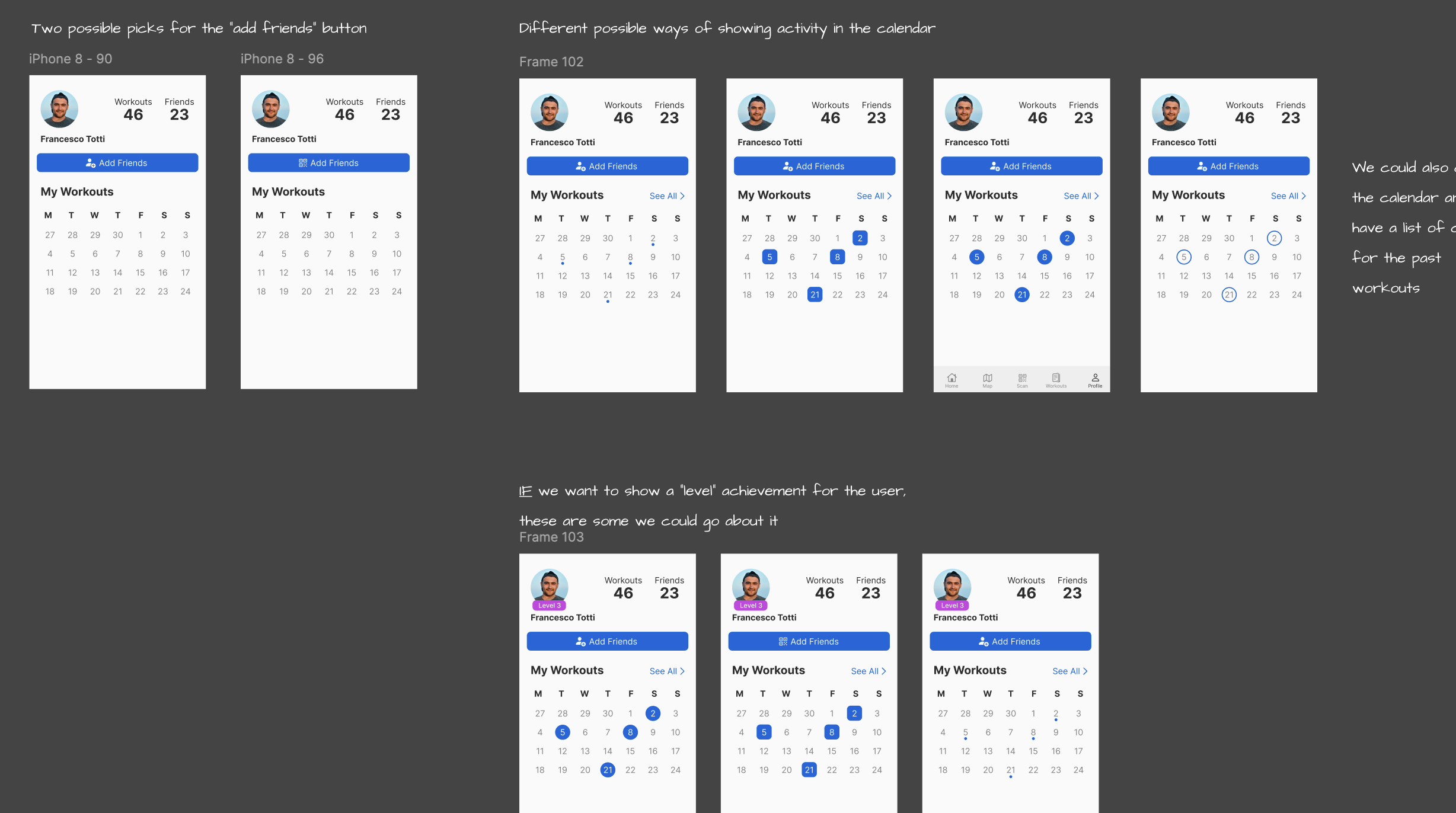
Design Iterations
Various alternatives for each part the interface were generated, this process of exploration and refinement allowed us to evaluate more ideas and understand what worked and what didn't.

Design Iterations
Result
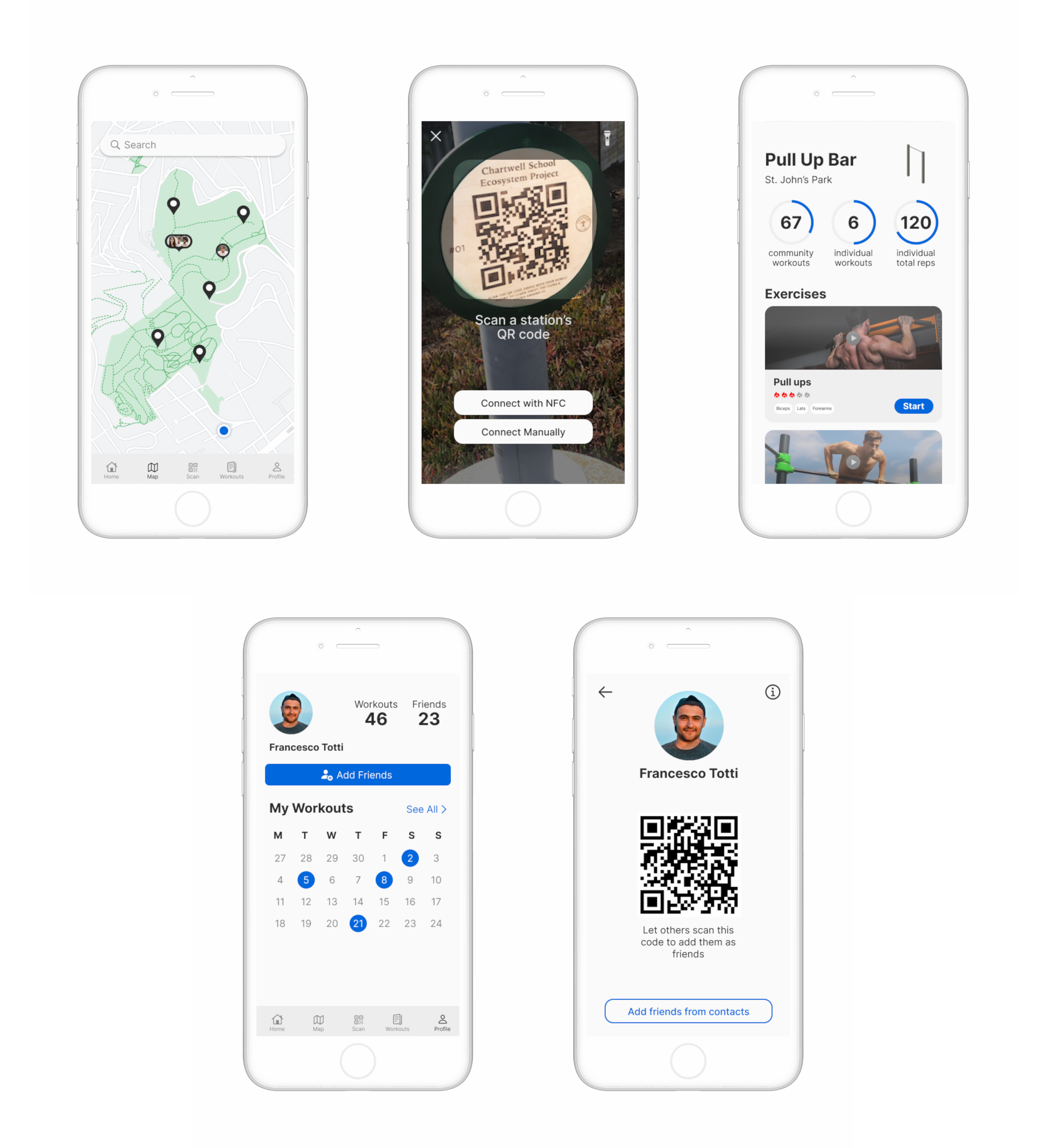
Final look of some of the screens for the prototype
Although this does not represent a completed design, in just a few weeks we were able to create a well-defined concept for how the system could work and communicate it effectively through our prototypes.
The concept for our system was presented to UAB in Barcelona.
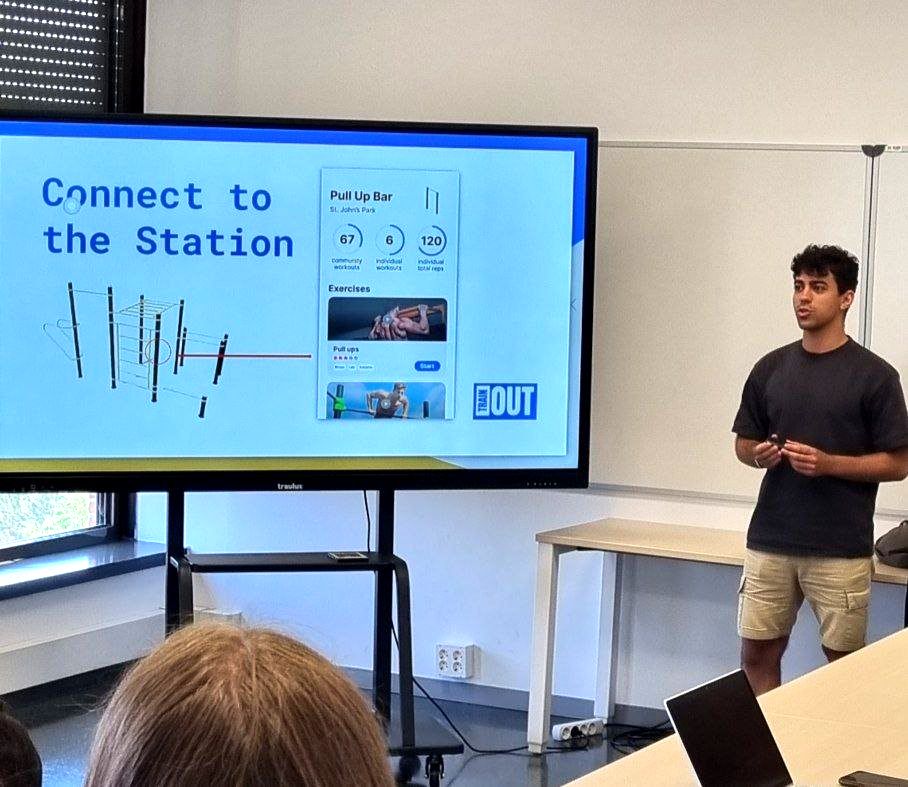
Presenting our idea to UAB
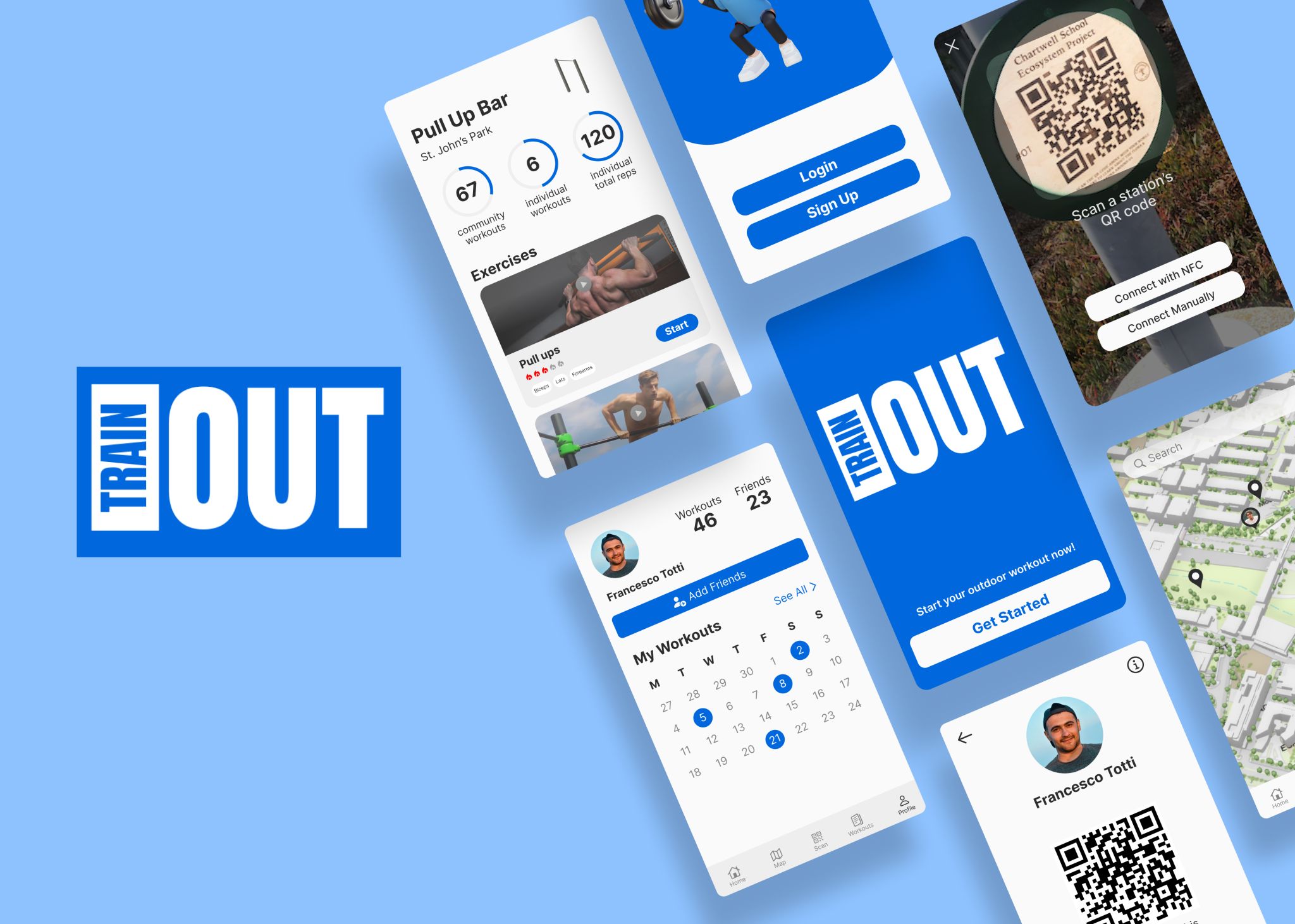
Train out was the name chosen for the app
References:
1. Bandwagon effect. - R Schmitt‐Beck
